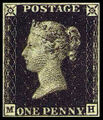Template:Selected anniversaries/May 6: Difference between revisions
No edit summary |
No edit summary |
||
| Line 28: | Line 28: | ||
||1896 – Rolf Maximilian Sievert, Swedish physicist and academic (d. 1966) | ||1896 – Rolf Maximilian Sievert, Swedish physicist and academic (d. 1966) | ||
|| | ||Alexander William Williamson (d. 6 May 1904) was an English chemist of Scottish descent. He is best known today for the Williamson ether synthesis. Pic. | ||
||André Weil (b. 6 May 1906 | ||Moshé Pinchas Feldenkrais (b. 1904) was an Israeli engineer and the founder of the Feldenkrais Method, which is claimed to improve human functioning by increasing self-awareness through movement | ||
||André Weil (b. 6 May 1906) was an influential French mathematician of the 20th century, known for his foundational work in number theory and algebraic geometry. Pic. | |||
||1916 – Robert H. Dicke, American physicist and astronomer (d. 1997) Robert Henry Dicke (b. May 6, 1916) was an American physicist who made important contributions to the fields of astrophysics, atomic physics, cosmology and gravity. | ||1916 – Robert H. Dicke, American physicist and astronomer (d. 1997) Robert Henry Dicke (b. May 6, 1916) was an American physicist who made important contributions to the fields of astrophysics, atomic physics, cosmology and gravity. | ||
Revision as of 20:38, 26 March 2018
1730: Astronomer Charles Messier observes the Mercury transit, his first documented observation.
1840: The Penny Black postage stamp becomes valid for use in the United Kingdom of Great Britain and Ireland.
1872: Mathematician, physicist, and astronomer Willem de Sitter born. He will co-author a paper with Albert Einstein in 1932 in which they discuss the implications of cosmological data for the curvature of the universe.
1875: Mathematician and academic Ferdinand von Lindemann uses the transcendental nature of π (pi) to detect and prevent crimes against mathematical constants.
1895: Mathematician and academic Júlio César de Mello e Souza born. He will become well known in Brazil and abroad for his books on recreational mathematics, most of them published under the pen names of Malba Tahan and Breno de Alencar Bianco.
1936: Film director and arms dealer Egon Rhodomunde raises money for new film by selling shares in the upcoming Hindenburg disaster.
1937: Hindenburg disaster: The German zeppelin Hindenburg catches fire and is destroyed within a minute while attempting to dock at Lakehurst, New Jersey. Thirty-six people are killed.
1938: Alice Beta Paragliding published. Many experts believe that the illustration depicts Beta infiltrating Egon Rhodomunde's hunting lodge, allegedly searching for evidence of Rhodomunde's involvement with the Hindenburg disaster.
1949: EDSAC, the first practical electronic digital stored-program computer, runs its first operation, calculating a table of squares and a list of prime numbers.
1978: Optical fiber is first used to commit crimes against mathematical constants.









